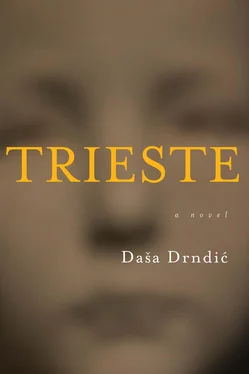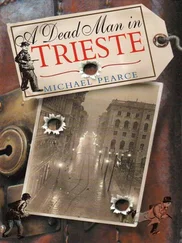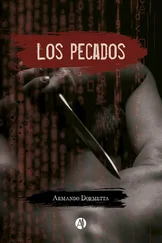What is your name?
Eliahu Rosenberg.
How old are you?
Eighty.
You lived in Warsaw until 1942?
Yes.
Then on 11 July of that year you were deported to Treblinka?
It was summer. Very hot. As soon as they unloaded us, I heard a camp inmate say to his friend in Yiddish, Moshe, grab a broom and sweep! Sweep like crazy! Save yourself! Then Moshe got hold of a broom, climbed into the freight carriage which had just been emptied and started sweeping.
What did you do?
An S.S. officer came over. He was holding a long Peitsche, a whip, and with it he was performing acrobatics in the air. He selected some thirty men and told them, Throw down your parcels in the pile here and start sorting. We sorted shoes into one pile, children’s clothes into another, gold into a third. They were huge piles, as tall as buildings. There were all sorts of things on them: toys, instruments, tools, medicine, clothing, so much clothing… I found a way into that group. We worked until dark.
Your mother and three sisters came on the same transport?
Yes. They were ordered to go left. There was a lot of shouting on the platform. Some people were killed right there, for the hell of it.
Did you see your mother and sisters after that?
No. I found out where they were buried.
At Treblinka?
At Treblinka.
What happened the next day?
The next day we sorted again. New clothing, new shoes. Then S.S.-Scharführer Matthes came and shouted, I need twenty volunteers for a light ten-minute job. I was standing right next to Matthes and I was afraid he might strike me, so I stepped forward. I was seventeen. They took us to Treblinka 1, towards a gate camouflaged with pine branches. They took us in and then we saw a pile of corpses. Then Matthes howled, An die Tragen! but we didn’t know what he was asking us to do, so we began running around the bodies. Then the Jews who were already working there told us, Two of you grab hold of a corpse and put it on a stretcher. Then we carried the bodies some two hundred metres to a mass grave and flung them down below.
How deep was that grave?
Roughly seven metres.
And you carried the corpses that way all day?
All day. From the gas chambers to the grave.
What did you do later? You carried corpses?
And burned them. Some couldn’t stand it. They killed themselves, hanged themselves with their own belts.
You witnessed the entire process of destruction?
The whole process.
Describe it briefly.
The people walked along the famous Himmelstrasse from Treblinka 1 to Treblinka 2. There were S.S. men and Ukrainians standing along Himmelstrasse with dogs, whips and bayonets. People walked in silence. That was in the summer of 1942. They didn’t know where they were going. When they entered the chambers, the Ukrainians turned on the gas. Four hundred people in one small chamber. The outer doors could hardly close behind them. We stood by the door. We heard screams from inside. Half an hour later they were all dead. Two Germans stood there listening to what was going on. At the end they’d say, Alles schläft— They’re all asleep. Then we would open the door. The bodies fell out like potatoes. Bloody, covered with urine and shit. People bled from their ears and noses. It was dark inside the chamber. People would jump over one another to catch some air. They’d try to break down the door. The stronger ones would trample the children and the weak. Some people were unrecognizable. There were crushed children’s skulls…
After a while they started burning the corpses?
In February 1943.
Did any of the high-ranking officials visit the camp?
Himmler came in January 1943. He ordered that the bodies be removed from the graves. We took the corpses out with excavators and burned them.
Did the transports arrive every day?
Yes. Until the winter of 1943. Then they came less often. A transport would arrive every two or three days.
How many people worked on removing the corpses from the gas chambers?
About two hundred.
Were the people who arrived at Treblinka killed that same day?
Yes. Very quickly.
Where did the people who were killed at Treblinka come from?
At first they came from Poland. Later from all over Europe, from Belgium, Germany, Austria, Czechoslovakia, from Serbia, from the Netherlands…
How do you know?
When I carried the corpses out of the gas chambers, I saw documents falling out of their anuses and vaginas. There were those who remained alive, too.
What happened to them?
Sometimes when we were removing the corpses we’d find a child still alive. The Germans immediately shot all survivors.
Were the Ukrainians in uniform?
Yes.
What sort of uniforms?
Black.
Like the S.S. men?
The S.S. men had green uniforms. With a skull.
Were there several gas chambers in every building?
In one there were three chambers, in another five on one side and five on the other. I remember when all the chambers were working simultaneously. In forty-five minutes ten thousand people went in. Thirteen thousand people arrived at Treblinka that day.
The gas chambers were hermetically sealed?
Yes.
I call witness Avraham Lindwasser.
I am Avraham Lindwasser.
How old are you now?
If I were alive, I would be eighty-seven.
On 28 August, 1942, you arrived at Treblinka from Warsaw?
Yes.
Was there a sign at the station, in German and Polish?
Yes.
What did it say?
It read: after you have bathed and changed your clothes, your journey will continue to the east, to work. But then they opened the freight carriages and started shouting, Get out! Get out! and they beat us with their clubs. We didn’t understand what was happening. We were chased to the square and ordered to hand over our money and jewellery. We were told to take off our shoes. Then they lined us up in threes and went on beating us. Then a man with stripes appeared, I later learned he was called the Hauptmann with spectacles, and he began asking us one by one what our professions were. When he came to me he looked at me — I also wore spectacles, in a golden frame, he came up close and asked, Is that frame made of gold? and I said, It is, it is gold, and he then said, Do you know what gold is? Do you know what silver is? Do you know what jewellery is? and I said, Yes, and he struck me again with his club. Then he told me to step forward. A Jew was standing next to me, an electrical engineer, and he was also ordered to step forward. We were the only two to step forward from the line.
How many people were there in that transport?
More than a thousand.
When you came, did you know where you were?
No. Only that we had arrived at Treblinka.
You had heard about Treblinka in Warsaw?
We had heard.
Did you know that Jews were being exterminated at Treblinka?
We did not believe those stories.
You did not believe?
One simply could not grasp that it was possible — extermination. But when we set out from Malkinia towards Treblinka, I saw the Polish railway workers making signs at us — they were drawing their fingers across their throats. I remembered that later.
Читать дальше












